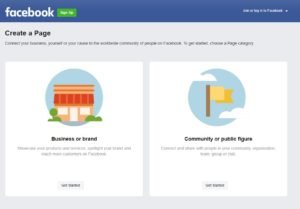About The Nude Window
The Nude Window is a Sunshine Coast-based family business specialising in bespoke curtains and blinds for homes, builders, wholesalers and interior designers. Since starting in 2019, they’ve built a local...

The first step to creating your social media pages is deciding what social media platforms you should be using. Not every social media platform is suitable for every type of business, or you may not see the ROI of using all platforms. I have outlined three social media platforms your business should consider when starting out - however, there are several to consider.
Firstly, it is easiest to access Instagram from your phone. You can download the apps via these links:
Apple App Store, Google Play Store, Microsoft Store.
You can also access Instagram from your web browser on your computer
You can create an account with an email, name, username and password.
When choosing your profile picture, it is a good idea to use your business logo or an image that represents your business.
Make sure you complete your profile with your important information. This includes your business name (different to your username), a link to your website, and some background information about the business, products and services offered.
You can also add an action button, which is great if you are using an integrated service (e.g. appointment booking, table reservations).
Firstly, visit the facebook.com/business page and click get started on the most suitable type of page you want to create.

You will need to log in to your personal Facebook account to create a page.
Enter the name that you would like your business page to be called and add a category. Pick the one that you think your customers will most likely associate with your business.
Enter your business address. If your business is one without a shop front, tick the box that says 'don't show my address.' Then click continue.
Upload an image to be your profile picture and cover image. Usually, brands will upload their logo as the profile picture and choose a relatable image for the cover photo - however, this might change depending on the type of business you are.
Similar to Instagram, you will have a page name and also a username (handle) that people will search on Facebook. Your username will be at the end of your Facebook URL and also will be what customers can tag you with on photos and posts.
This should include the about section of the profile, along with any other part relevant to your business. It should also include ensuring you are using the correct template and have Call To Action buttons enabled.
You can update your Page's profile from the normal Facebook app, however, you can also download the Facebook Pages Manager available on IOS and Android via the Google Play Store.
LinkedIn is great for building your corporate brand awareness. All B2B businesses should have a LinkedIn page and even B2C companies who want to grow their brand in the corporate space should consider it.
Firstly, you need to log in to your personal LinkedIn account. If you do not have one, create one. Once you are logged in, click on Work in your menu bar and then Create a Company Page. Then, select what type of page you need to create.
You will need to input:
Business Name
URL for LinkedIn
Website Link
Industry
Company Size
Company Type
Logo
Small 'tagline' or about you.
Click create page.
Once you have created the page, make sure you add further details about your business and your specialities.
Lorem ipsum dolor sit amet consectetur, adipisicing elit. Ipsa libero labore natus atque, ducimus sed.

Small Business, Hospitality, Tips, Customer Experience
Marketing isn’t just about products, services, or clever advertising - it’s about people.
People buy from people.
The strength of relationships in business is what truly drives long-term success, and one of the best examples of...